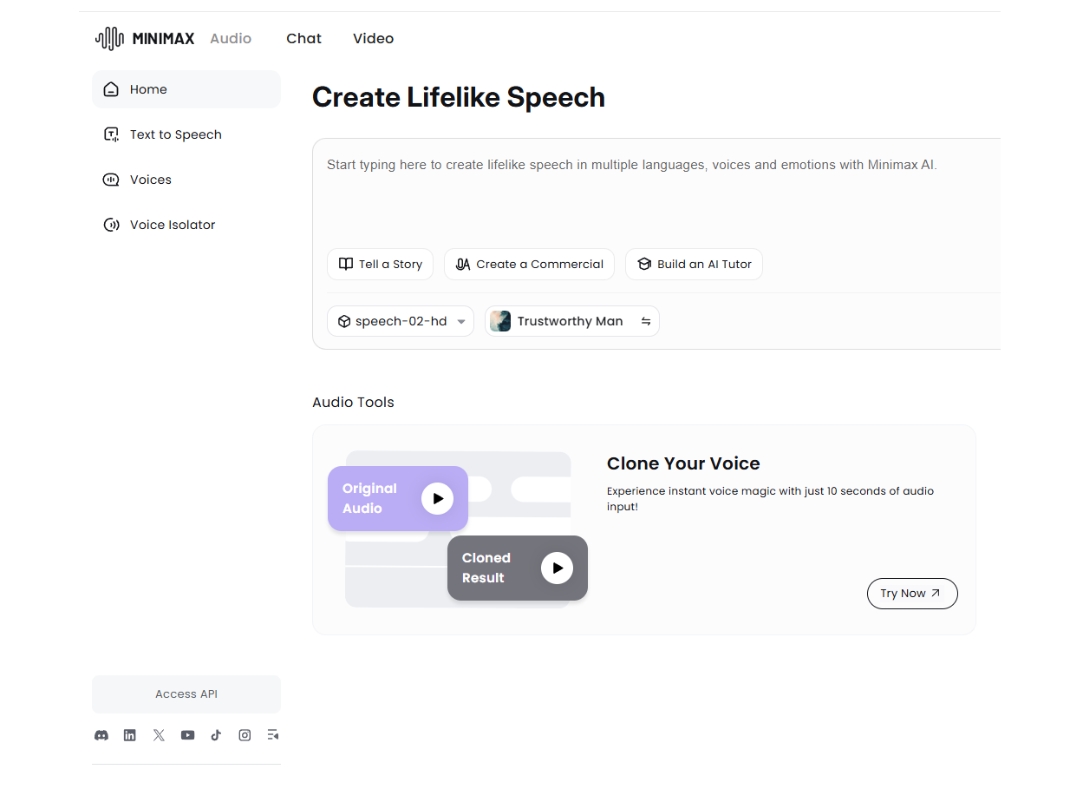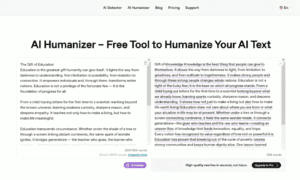High-quality dubbing enables media content to be understood by broader audiences across languages and regions. Recently, artificial intelligence (AI) voice dubbing technology has emerged as an alternative to traditional human dubbing.
In this blog, we’ll compare AI dubbing and human dubbing in terms of quality, cost, speed and viewer preferences to help determine which approach may be better suited for specific needs.
Understanding AI Dubbing
AI dubbing uses artificial intelligence and machine learning to automatically generate dubbed voices that replace original voices in media files.
The core technology behind most AI dubbing systems is speech synthesis, which is used to recreate human-sounding vocal audio output from text input. AI voice dubbing systems are trained on large datasets of voice recordings to learn how to mimic human voices and fluent speech patterns in multiple languages.
In practical use, an AI dubbing system analyzes the script or subtitles associated with a video file as textual input data. It then algorithmically generates an entirely new computerized vocal track to dub over the original voices. The synthesized voices are matched to the vocal characteristics of the original actors as closely as the current state of the technology allows.
There are several key advantages to using AI dubbing instead of human dubbing:
- Cost-effectiveness – AI dubbing does not require hiring and coordinating human voice talent for dubbing projects, resulting in faster turnaround times and reduced costs.
- Speed and efficiency – AI systems can dub media content at very fast speeds by automating the dubbing process almost entirely based on script input. This also scales easily to handle large volumes of content.
- Scalability – AI dubbing providers can simply allocate more computing power to dub virtually unlimited content volumes in multiple languages simultaneously without human effort and labor limitations.
Understanding Human Dubbing
In contrast to AI methods, human dubbing relies entirely on trained actors and voice talents reading and recording dubbed dialogue and vocals. This requires directors and production teams to guide the emotional expression and delivery of the dubbed content.
Quality human dubbing depends significantly on the acting skills, vocal range, proper pronunciation and creative direction provided to dubbing voice talents in recording studio environments. Achieving authenticity also requires cultural fluency and contextual understanding of the media being dubbed.
There are also notable advantages associated with traditional human dubbing practices:
- Emotional depth – Skilled human voice actors can deliver more subtle, authentic and compelling emotional performances.
- Cultural authenticity – Human judgment and understanding aid more natural dialogue suited to localized cultural contexts.
- Voice acting quality – Vocal performances by talented human voice actors result in a more believable and higher quality end product.
Comparison between AI and Human Dubbing
When comparing the audio quality achieved by AI dubbing systems and human dubbing experts, there are trade offs to consider:
AI-generated voices can sometimes sound robotic and unnatural without the proper emotion, inflection and authentic personality that human actors provide through vocal performances.
However, AI synthesis quality continues advancing year-over-year. An AI voice generator can now offer voice cloning capabilities, enabling users to replicate voices with just 10 seconds of audio input. Some text-to-speech tools like Minimax provide support for over 17 languages and a library of more than 300 pre-built voices, making them versatile solutions for content creators.

On measures of emotional resonance and dramatic performance quality, skilled human dubbing actors still significantly outperform AI systems strictly reliant on speech synthesis without deeper human-level understanding of emotions, subtext and unspoken elements that color human speech.
Initial audience testing suggests a preference among viewers for media content dubbed by human voice actors compared to artificial voices in most contexts, especially those requiring emotional depth.
Cost Analysis
There are major differences in cost structure between the two dubbing methods:
AI dubbing primarily incurs computing costs determined by speech synthesis platform fees which allow businesses to use cloud-based services rather than hire full dubbing departments and studios. It avoids the need to hire, train and record human voice talent. However, upfront investment is required to develop custom AI dubbing solutions.
Qualified human dubbing relies much more heavily on talent acquisition and ongoing labor costs, including script writers, translators, directors, engineers and of course voice actors. While competitive human talent can be found globally, coordination and studio expenses add up.
Over longer time periods, accumulating human labor costs often exceed the upfront and computational expenses of AI dubbing capabilities that can be reused indefinitely at scale. However, AI cannot fully replace certain high-value use cases.
Speed and Efficiency
AI dubbing solutions can often complete full overdubs of video footage within minutes by automating text analysis and speech generation processes once properly tuned. This allows dubbed versions to be generated almost as quickly as scripts can be translated.
While a single experienced voice actor may dub scripts at a consistent pace, coordinating full human dubbing projects incorporates scheduling, multiple talent recordings, manual review and quality assurance. It stretches the timelines, sometimes to weeks or months depending on scale.
This is why AI dubbing has a huge speed and efficiency advantage for large volumes of media, scaling exponentially faster by using cloud computing instead of human effort. But for small batches or highly specialized needs, human-centered workflows may have quicker turnaround.
Conclusion
In review, while AI dubbing has advanced drastically in synthesizing human-like vocal performances from scripts, human voice actors still deliver superior quality and authenticity, especially for content where emotional resonance is key. This needs to be weighed carefully against the over 10x speed and cost savings potential from automating dubbing via AI solutions.
For documentaries, lectures, news and functional video content without heavy dramatic performance demands, AI dubbing quality is often sufficient while enabling much quicker localization across global markets.
In creative entertainment and advertising media where emotional impact matters most, the extra investment in quality human dubbing is usually warranted.





























